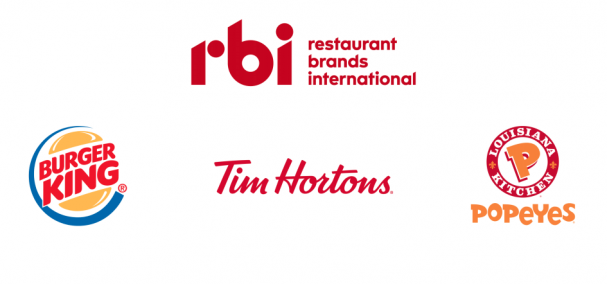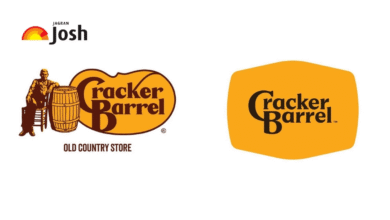Restaurant Brands International Earnings Report Shows Challenges

Restaurant Brands International earnings were recently unveiled, revealing a mixed bag of results that left analysts with a sense of cautious optimism. The fast food giant, which oversees beloved chains like Tim Hortons, Burger King, and Popeyes, reported quarterly figures that fell just short of expectations. Despite a reported revenue of $2.11 billion, the company faced challenges with the sales performance of its flagship brands, particularly with Burger King’s decline and Popeyes’ disappointing same-store metrics. However, CEO Josh Kobza expressed hope as he noted improvements in operational momentum leading into the second quarter, suggesting a potential turnaround is on the horizon. With increased emphasis on international growth and strategic investments, Restaurant Brands aims to bolster its position in the competitive landscape of the restaurant industry.
The latest financial disclosures from Restaurant Brands International highlight significant developments in the company’s performance, demonstrating the challenges faced by many quick-service restaurants. As the parent company of popular brands such as Popeyes and Tim Hortons, it experienced a decline in both earnings and revenue relative to market expectations. Factors impacting this downturn included reduced sales figures at Burger King and underwhelming customer engagement with Popeyes. Yet, amid these challenges, there are shoots of recovery, particularly in international markets reporting more robust same-store sales growth. As Restaurant Brands refines its strategy, focusing on operational improvements and brand revitalization, investors are hopeful for a rebound in performance in the upcoming quarters.
Restaurant Brands International Earnings Analysis
Restaurant Brands International’s recent earnings report has highlighted some challenges yet to overcome. The company reported earnings per share of 75 cents, which, while a slight drop compared to last year, is still commendable given the broader context of the fast food industry. Analysts had anticipated a figure of 78 cents, revealing a miss on their projections. Revenue also experienced a shortfall, hitting $2.11 billion against expectations of $2.13 billion. This underperformance can be attributed to the notable struggles of its flagship brands: Popeyes, Burger King, and Tim Hortons, all of which reported declines in same-store sales.
Despite these setbacks, CEO Josh Kobza remains optimistic, pointing to a renewed momentum as they approach the second quarter. He indicated that while the current figures appear to be disappointing, they are already witnessing a turnaround in sales, particularly as consumer demands shift and the company innovates its marketing strategies. It is crucial for Restaurant Brands International to nail down these changes as they map out their financial forecasts for the coming years, with an aim for an average growth of 3% in same-store sales.
Frequently Asked Questions
What were Restaurant Brands International’s earnings for the latest quarter?
Restaurant Brands International reported adjusted earnings of 75 cents per share for the latest quarter, which was slightly below the expected 78 cents. The net income attributable to shareholders was $159 million, or 49 cents per share, reflecting a decrease from $230 million, or 72 cents per share, from the previous year.
How did Restaurant Brands’ revenue compare to Wall Street’s expectations?
Restaurant Brands International reported a revenue of $2.11 billion for the quarter, which fell short of analysts’ expectations of $2.13 billion. Despite this, revenue experienced a 21% increase primarily driven by growth in Popeyes and Firehouse Subs.
What trends were observed in Popeyes sales performance this quarter?
Popeyes sales performance saw a decline of 4% in same-store sales, which was greater than Wall Street’s forecasted decline of 1.8%. The previous year’s sales were boosted by a successful Super Bowl advertisement, which was absent this year.
What challenges did Burger King face regarding sales performance?
Burger King experienced a same-store sales decline of 1.3%, exceeding the anticipated drop of 0.9%. The brand’s U.S. operations, which are undergoing a turnaround strategy, noted a decrease of 1.1% in same-store sales.
How did Tim Hortons perform in terms of same-store sales?
Tim Hortons reported a same-store sales decline of 0.1%, missing expectations of 1.4% growth. This performance contrasts significantly with last year’s same-store sales growth of 6.9%.
What are the future expectations for Restaurant Brands International’s earnings growth?
Restaurant Brands International maintains its long-term growth expectations, aiming for an average of 3% same-store sales growth and 8% organic adjusted operating income growth from 2024 to 2028, reaffirming its commitment to financial recovery.
What improvements did CEO Josh Kobza mention regarding Restaurant Brands International’s sales trends?
CEO Josh Kobza highlighted that there has been significant momentum improving as they approach the second quarter, which they believe will lead to better absolute results and increased sales confidence for the remainder of the year.
What was the overall same-store sales growth for Restaurant Brands International this quarter?
The overall same-store sales growth for Restaurant Brands International was recorded at just 0.1%, reflecting challenges faced by its core brands, particularly in a tough market environment influenced by cautious consumer behavior.
What impact did international sales have on Restaurant Brands International’s earnings?
Restaurant Brands’ international segment experienced a positive trend with a same-store sales growth of 2.6%, indicating stronger demand outside North America and contributing positively to the overall earnings perspective.
| Key Metrics | Reported Figures | Expectations | Notes |
|---|---|---|---|
| Earnings per Share | 75 cents | 78 cents | Adjusted earnings down from 72 cents last year. |
| Revenue | $2.11 billion | $2.13 billion | Net sales rose due to contributions from Popeyes and Firehouse Subs. |
| Net Income | $159 million (49 cents per share) | N/A | Down from $230 million a year prior. |
| Tim Hortons Sales Growth | -0.1% | 1.4% expected | Last year showed a 6.9% growth. |
| Burger King Sales Growth | -1.3% | 0.9% expected | U.S. business down by 1.1% during turnaround. |
| Popeyes Sales Growth | -4% | 1.8% expected | Did not run Super Bowl advertisement this year. |
| International Sales Growth | 2.6% | N/A | Strong demand outside U.S. and Canada. |
| 2025 CapEx Outlook | $400 million – $450 million | N/A | Continued investments in growth and incentives. |
| Long-term Growth Expectations | 3% same-store sales growth | 8% operating income growth | Target period: 2024 to 2028. |
Summary
Restaurant Brands International earnings revealed a mixed performance as the company faced declines in same-store sales across its major brands, including Popeyes, Burger King, and Tim Hortons. Despite reporting revenues and earnings that fell short of expectations, the company is optimistic about a potential turnaround in the upcoming quarters. CEO Josh Kobza emphasized the positive momentum as they approach the second quarter, indicating confidence for the remainder of the year. Overall, Restaurant Brands is strategizing for growth with planned capital expenditures and long-term revenue goals, aiming for improved performance moving ahead.




